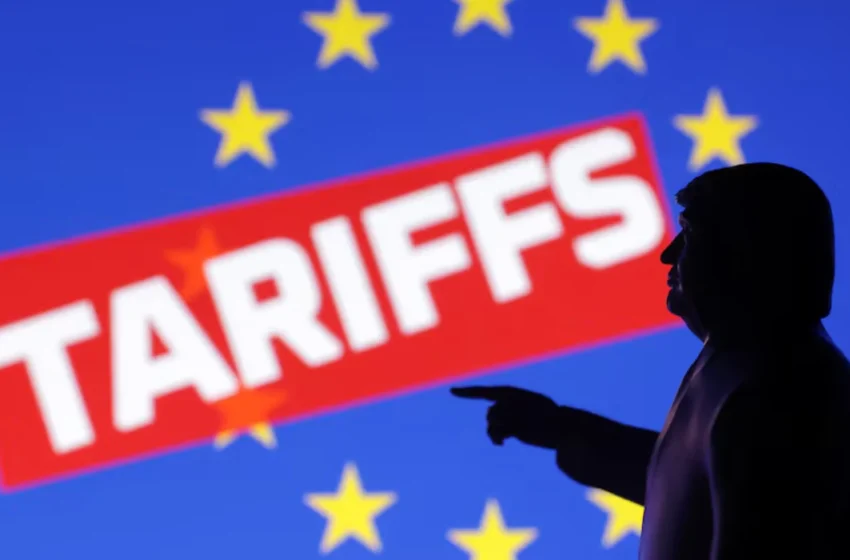
Brussels (Europe Brief News): The EU seeks clarification after Trump proposed a 50% tariff on EU imports from June 1, with Brussels and Washington trade officials set to hold key talks.
“This is a major escalation of trade tensions,”
Said Holger Schmieding, chief economist at Berenberg.
“With Trump, you never know. But this would be a major escalation. The EU would have to react and it is something that would really hurt the U.S. and European economy.”
When Trump’s 90-day moratorium ends on July 8, the EU will be subject to 25% U.S. import duties on steel, aluminum, and automobiles, as well as 10% so-called “reciprocal” tariffs on nearly all other items.
According to EU statistics agency Eurostat, the U.S. goods trade imbalance with the European Union was around 200 billion euros ($226.48 billion) last year.
Washington claims the tariffs are intended to make up for this shortfall. However, there is a significant trade surplus in services between the US and the EU.
According to persons familiar with the matter, Washington has issued Brussels a list of requests to cut the deficit in the last week, including so-called non-tariff barriers like abolishing national digital services taxes and adopting U.S. food safety standards.
In response, the EU has proposed a win-win agreement that may involve both parties lowering their tariffs on industrial goods, the EU purchasing more soybeans and liquefied natural gas, and working together to address problems like steel overcapacity, which both parties attribute to China.
In response to these discussions and in anticipation of a potential meeting in Paris in early June, the Sefcovic-Greer conversation was scheduled.
Michal Baranowski, the deputy minister of economics for Poland, whose nation currently holds the rotating EU presidency, said the threat of a 50% tariff seemed like a negotiation tactic.
“The European Union and the United States are negotiating. Some negotiate behind closed doors, others more in front of cameras,”
He told reporters on the sidelines of a meeting in Brussels, adding negotiations could last until early July.
“The fact that we see some important statements in the public domain does not mean that they will translate into actions of the U.S. administration,”
He said.
Although it has stated time and time again that it would prefer a negotiated solution, the European Commission is prepared to use force if talks break down.
A list of 95 billion euros of U.S. goods has been developed by the union as countermeasures to the U.S.’reciprocal’ and auto tariffs, while penalties on 21 billion euros of annual U.S. imports were imposed before being suspended in reaction to the U.S. metals tariffs.
What are the potential economic impacts of a 50% tariff on the EU?
Investor concerns over rising trade tensions and a potential trade war were reflected in the announcement’s immediate drops in European market indexes (e.g., Germany’s DAX down 2.6%, France’s CAC 40 down 2.8%) and U.S. futures.
Significantly higher tariffs would apply to EU goods valued at hundreds of billions of euros that are shipped to the United States, making them more costly and less competitive in the American market. Exports from the EU may decline as a result, especially in industries like luxury products, machinery, wine, cheese, and cars.
Global corporations doing business across the Atlantic may experience higher expenses and logistical difficulties, which could cause supply chain interruptions and decreased productivity.


